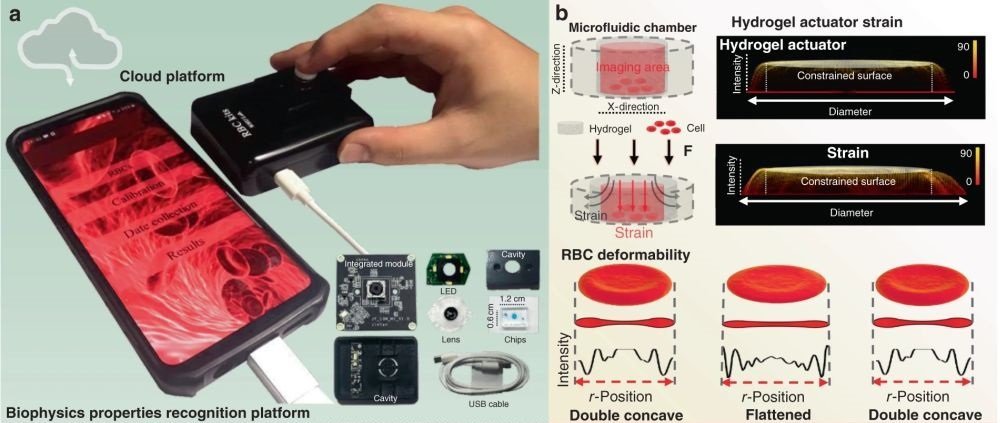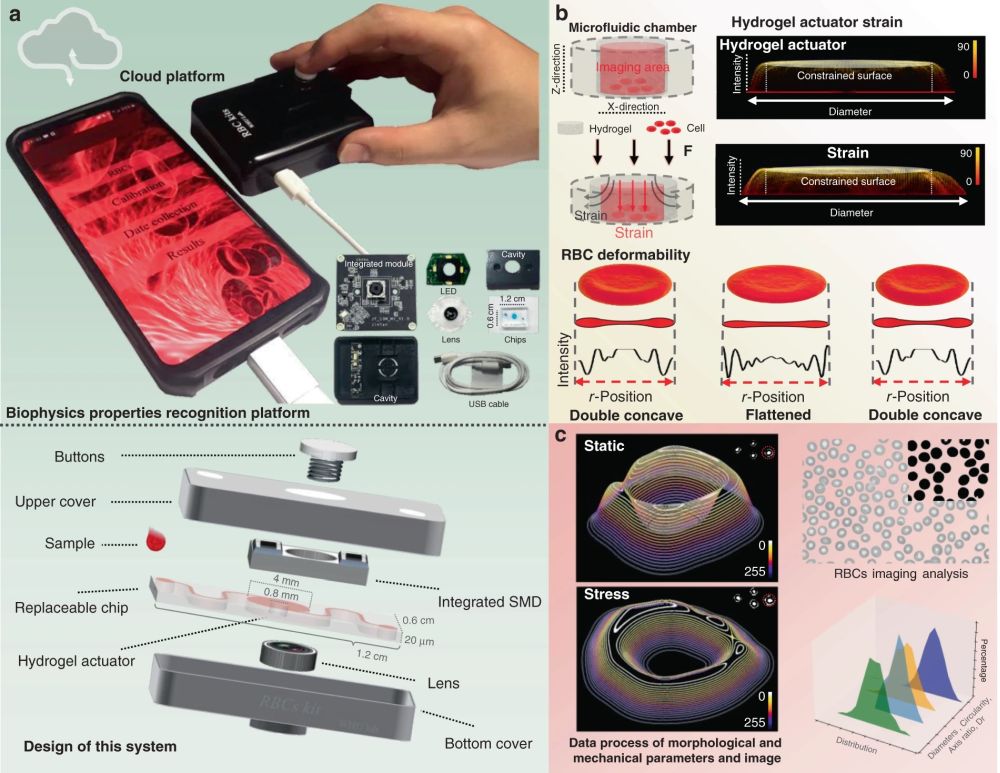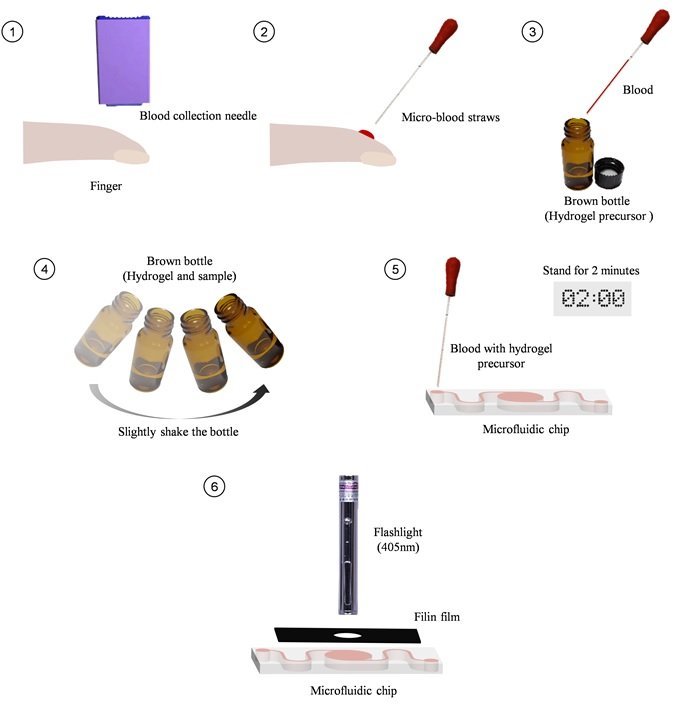
11 Dec Microfluidic point-of-care device uses cloud computing to analyze blood samples
Microfluidic chips can be modular and can be connected to a wide range of read-out systems which in turn makes them a suitable choice for point of care applications. In this week’s research highlight, we will introduce a microfluidic chip that uses a trained neural network to analyze blood samples by measuring the mechanical and morphological properties of red blood cells (RBCs) and sending them to a cloud platform.
“Herein, we revolutionarily propose a smart optofluidic system to provide a differential diagnosis for blood testing via precise cell biophysics property recognition both mechanically and morphologically. Deformation of the RBC population is caused by pressing the hydrogel via an integrated mechanical transfer device. The biophysical properties of the cell population are obtained by the designed smartphone algorithm. Artificial intelligence-based modeling of cell biophysics properties related to blood diseases and quality was developed for online testing. “, the authors explained.

Reproduced from Chen, L., et al., Microsyst Nanoeng., (2021). DOI: s41378-021-00329-z under Creative Commons Attribution 4.0 International License.
The working mechanism of the microfluidic device
The blood analysis microfluidic platform for RBC analysis in the blood consisted of PDMS based replaceable chip inside a readout system. The microfluidic device was microfabricated using conventional soft and photolithography techniques and had dimensions of 1.2 cm× 0.6 cm × 20 μm. As shown below, the proposed microfluidic system works by mixing the sample with a photo-curable hydrogel precursor which then gets introduced to the microfluidic chip where it gets cured. The button in the enclosure then gets pushed to transfer a mechanical force to the hydrogel causing the red blood cells (RBCs) to deform. The tunable built-in imaging system (depth of field: 10 μm) then captures the blood cell image and variables such as diameter, circularity, axis ratio, deformability, and distribution width gets collected. The data is then sent to a cloud computing platform where a trained neural network for five typical clinical blood diseases is used for diagnostics. The data is tested against megaloblastic anemia (MA), myelofibrosis (MF), iron deficiency anemia (IDA), thrombotic thrombocytopenic purpura (TTP), and thalassemia (Thal.) and is then sent back to the patient’s smartphone.

Reproduced from Chen, L., et al., Microsyst Nanoeng., (2021). DOI: s41378-021-00329-z under Creative Commons Attribution 4.0 International License.
“The comparison of this system diagnostic performance among experts in five clinical blood diseases via real-world prospective implementation (n = 432, 100% accuracy) and the personalized assessment of the stored blood quality (n = 98, 96.9% accuracy) demonstrated the feasibility of all key functional aspects as well as the practical utility of this system in the smart health care field. Furthermore, this smart optofluidic system can be extended to disease diagnosis accompanied by abnormal morphology and mechanics of blood cells, etc.; it can also be used to evaluate the recovery of patients with blood diseases after treatment. “, the authors concluded.
Figures are reproduced from Chen, L., Liu, Y., Xu, H. et al. Touchable cell biophysics property recognition platforms enable multifunctional blood smart health care. Microsyst Nanoeng 7, 103 (2021). under Creative Commons Attribution 4.0 International License.
Read the original article: A method of sequential liquid dispensing for the multiplexed genetic diagnosis of viral infections in a microfluidic device


